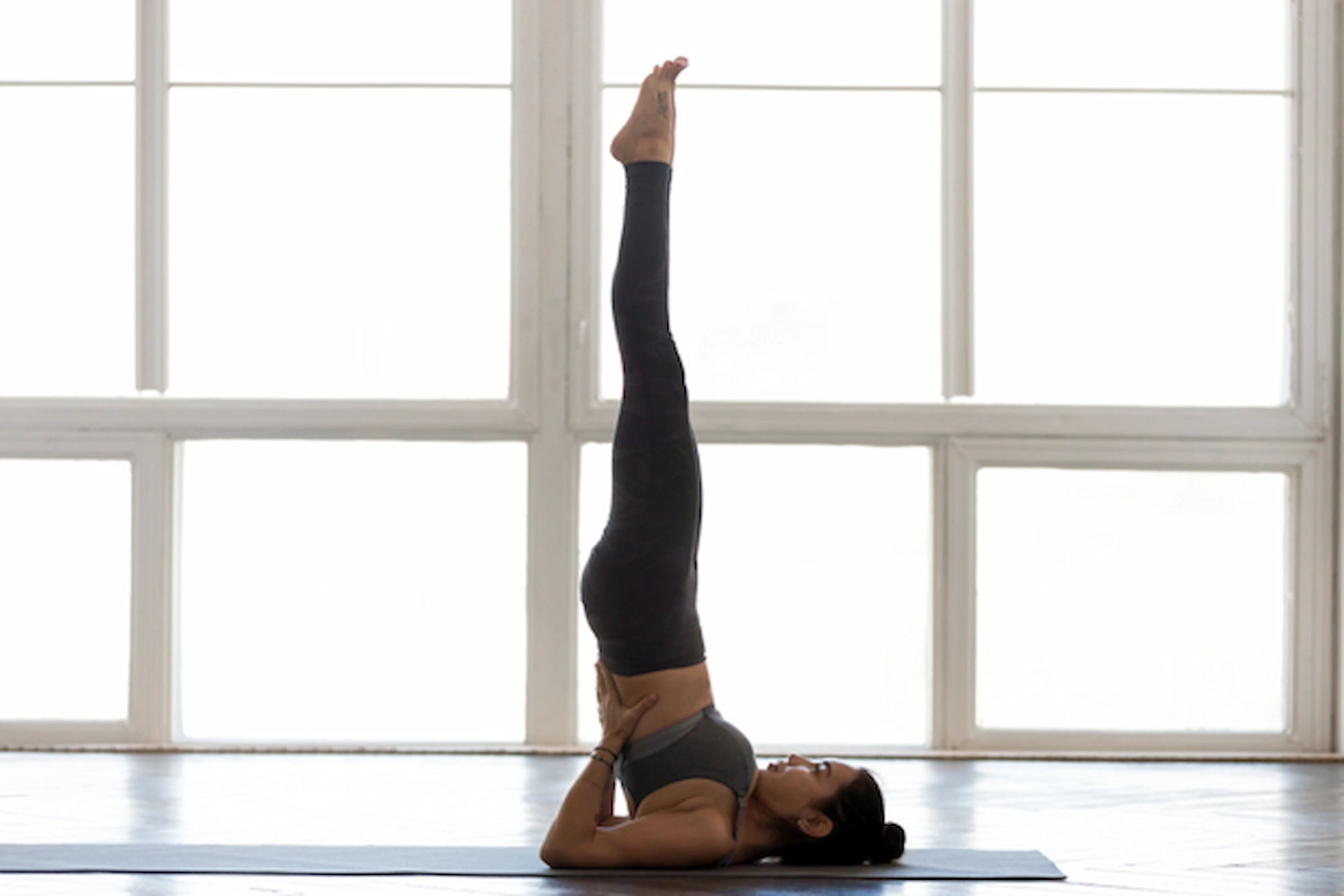
Yoga Inversions: Turning Your Practice Upside Down
August 20, 2025
Are you ready to take your yoga practice to the next level? While there are many ways to expand your practice, few are as transformative as practicing poses where your heart is elevated above your head.
So-called inversions improve your circulation, physical strength and mental clarity, as well as emotional balance. But if you’re not a seasoned practitioner yet, they can also feel a little intimidating. Read on to find out how to get started and how our experienced instructors can support you.
What Are Yoga Inversions?
Yoga inversions allow you to escape the laws of gravity, if only for a short time. These poses position the heart and sometimes the hips above the head and invite you to shift your mental and physical perspective in your practice and beyond.
Plus, despite what you may think, inversions are more accessible than they seem. They range from gentle, restorative options to more energizing, strength-based poses. You start with simpler versions and progress step-by-step when you’re ready.
Almost from the beginning, you’ll notice that your circulation and your mental focus will improve.
Benefits of Yoga Inversions
Let’s take a closer look at the benefits of yoga inversions. You don’t need to be a seasoned practitioner to feel the difference these asanas can make. Our students have mentioned feeling refreshed, more resilient and more grounded on and off the mat.
Turning your practice upside down will boost circulation and lymphatic flow for better heart health and to help your body get rid of toxins. Inversions can build upper body and core strength, supporting other areas of your yoga practice.
You’ll find yourself benefit from greater mental focus and lower stress levels, which will lift your mood and also help balance your nervous system.

Beginner-Friendly Inversion Options
Mention inversions and many practitioners think immediately of headstands and handstands. With regular practice, these advanced poses will become available to you. In the meantime, it’s important to start slowly and – most importantly – safely.
Start by putting your legs up against a wall and enjoy the sense of relaxation you gain from the pose. Make sure your lower back is straight and in contact with your mat. If you’re feeling comfortable in this pose, move on to bridge pose to elevate your hips in a way that is supported by your feet and your shoulders.
Downward facing dog is not only a very accessible inversion but also helps strengthen your spine, arms, and legs. For a more challenging version of legs-up-the-wall, try a reclined leg elevation pose. Start on your back with your knees bent before straightening your legs toward the sky. Make sure to keep your lower spine in contact with the mat and rest for a few breaths before lowering your legs.
Ask our instructors for more poses that help you build confidence without going fully upside down.
Progressing to Intermediate Inversions
Once you’re happy moving in and out of beginner-friendly inversions, try tackling a few more challenging poses to deepen your practice. Remember to approach these asanas gradually and mindfully, perhaps under the guidance of one of our experienced instructors at Uptown Yoga.
Shoulder stands can stimulate your thyroid and help you build stability in your neck and shoulders. Once you feel comfortable practicing shoulder stands, consider progressing to headstands to improve your balance, focus, and core strength.
Every body is different, and a pose that is available to you one day may be out of reach the next time you try. Forearm stands and handstands, for example, require a good level of strength and body control. Work your way toward them slowly, and never hesitate to ask for help.
Safety Tips and Contraindications
Aside from body awareness and a thorough warm up, there are a few other safety tips you can follow to include inversions into your practice safely.
There are a few circumstances, in which you should avoid inversions or consult a physician first. If you suffer from glaucoma, high blood pressure, neck or heart conditions, these poses might not be ideal for you.
Don’t be afraid to use props. Walls, blocks, and bolsters all increase your stability and improve alignment. Most importantly, listen to your body and don’t push too hard to achieve a certain pose.
How Uptown Yoga Instructors Can Support Your Inversion Practice
If you missed our recent inversions workshop, don’t worry. The next one is scheduled for Sunday, October 5.
Plus, our instructors are happy to guide you through your first inversions as well as more advanced poses so you can progress safely ensuring proper alignment.
When we introduce inversions in class, we start with props and use our wall space. And we’re happy to show you a way to explore these poses, whether it’s your first yoga session ever, you’re new to Uptown Yoga, or are a seasoned practitioner.
Final Thoughts
Practice your first inversions playfully and without judgment. These poses can be hugely empowering for your entire yoga journey. Book an in-person or an online class with Uptown Yoga today to benefit from clear guidance, gentle paths to progression, and support at every level. And don’t forget to sign up for our next “Foundations of Inversions” workshop on October 5, 2025.




